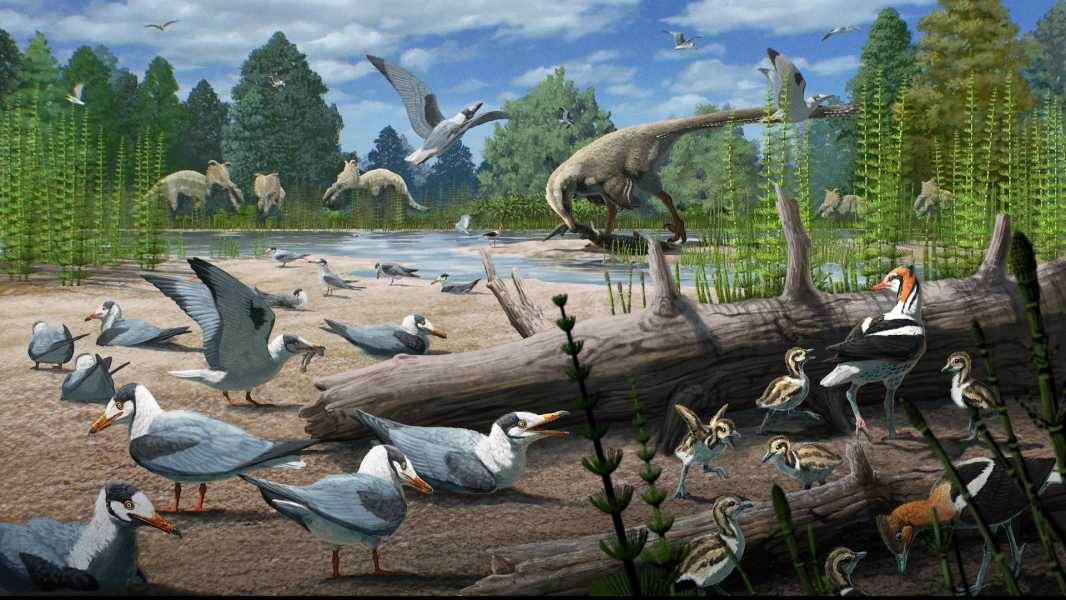
An artist's rendering of a scene from the Prince Creek Formation in Alaska during the Late Cretaceous. In the lower right are birds that belong to or are very similar to the group Neornithes, including all modern birds. In the lower left are Ichthyornithes, a group of birds that resemble gulls. In the upper left is Pachyrhinosaurus, a close relative of Triceratops, and in the center is Troodon, a carnivorous dinosaur that feeds on sturgeon. (Photo by Gabriel Ugueto)
New research confirms that birds have been nesting in the harsh Arctic environment for nearly 73 million years – 25 million years longer than previously thought.
A collection of more than 50 fossils discovered in northern Alaska, including embryos and juveniles, suggests that some of the early ancestors of modern birds either migrated or adapted to harsh polar conditions during the Mesozoic era, the age of dinosaurs.
“The conventional wisdom is that they’re too primitive to exhibit this kind of complex behavior,” Lauren Wilson, the study’s lead author and a graduate student in paleontology at Princeton University, told Live Science. “So you’re either dealing with [Arctic winters] as a tiny, newly hatched bird, or you’re 3 months old and have to fly about 2,000 kilometers [1,240 miles] to get to the point where migration makes sense,” Wilson explained. “I don’t think we would expect anything like that from these birds that aren’t in this modern lineage of birds.”
You may like
Sourse: www.livescience.com





